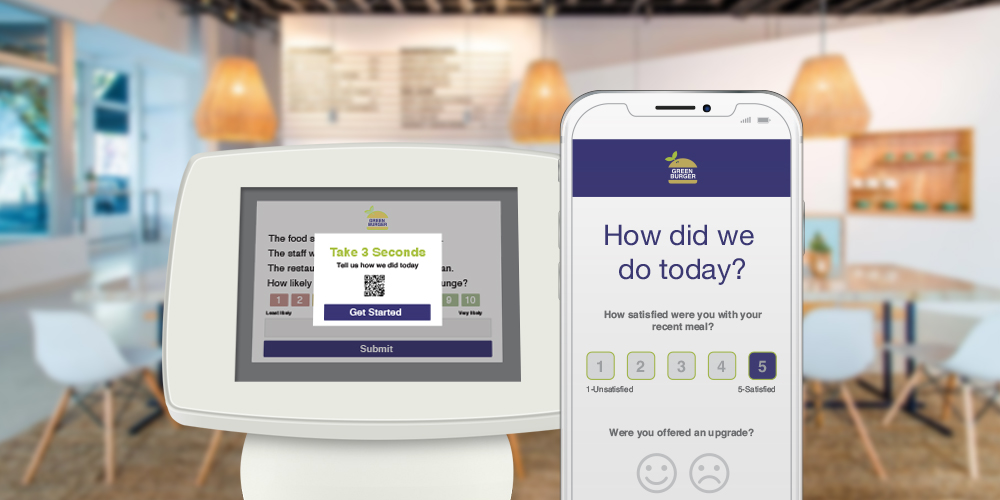Since the start of COVID-19, businesses have been vying for new and engaging ways to communicate with customers, while keeping physical human interaction at a minimum.
Enter QR codes, an easy and contactless way for businesses to communicate with customers throughout their entire journey at multiple touchpoints.
In this blog post, we’re taking a deeper look at QR codes, their growth over the years, and their power within the ever-evolving customer experience landscape.
What Are QR Codes?
Dating back to 1994, QR Codes, or Quick Response Codes, emerged as two-dimensional barcodes containing data accessible through the act of scanning. Since its debut in the 90s, however, applications or special tools for scanning are rarely needed and instead built into smartphones for ease of use. Today QR codes are used regularly with an average of 11 million US households scanning a QR code every year. This means that it isn’t only a highly accessible form of communication but also a colossal business advantage.
When it comes to functionality, businesses today leverage QR codes for a plethora of activities including customer feedback surveys, coupon redemption, newsletter sign-ups, providing product details, payments, ticketing, and more. With the growth of usage, the possibilities have become virtually limitless and thanks to its contactless capabilities it’s gaining monumental traction today.
With the advent of COVID-19, a pandemic that encourages contactless communication and greater digital options, QR codes have skyrocketed in adoption – and it isn’t showing signs of slowing down. In fact, it is estimated that by 2022, about 5.3 Billion coupon codes will be redeemed via QR Codes. So whether you’re a restaurant looking to gain more feedback from patrons or a retail store looking to provide more information on a product, QR codes are a considerable option that hold a promising future for business communication.
4 Ways QR Codes Have Improved Contactless Communication
1) Seamless Customer Experience
As mentioned previously, gone are the days where customers had to have an app or a specific tool to access QR code data. Today, accessing information via QR code is as simple as pulling out a smartphone and scanning a screen or receipt. With an upwards of 81% of U.S. adults having smartphones as reported by PEW Research, it’s an effortless process that puts the customer in control of the feedback experience.
What’s more, QR codes can keep customers engaged throughout their journey by being placed throughout a number of touch-points. Whether it be a poster board at your entrance, a prompt on a kiosk near the cashier, signage at tables, or an image at the end of receipt, you can continuously engage and prompt customers to access the QR code at their convenience.
2) Minimal Human Contact
At a time when physical distancing is paramount, QR codes became the holy grail of customer communication.
Using their phone to scan a kiosk or a receipt, the customer doesn’t have to come in contact with an employee. Throughout the process, they simply scan the collateral, get redirected to a form, and can fill it out/read it at their own convenience. This reduces physical contact, gives the customer freedom to fill out, and improves the overall experience.
3) Greater Flexibility
When it comes to placement, QR codes offer ultimate flexibility. You have the option to print them on receipts, add them to merchandise, include them on pizza boxes, or place them on key signage, however you choose to incorporate them, QR codes can be placed at key moments of truth to elicit a greater response.
What’s more, since the massive growth of QR codes, everyone has started seeing them for menus at restaurants or answering COVID questionnaires upon establishment entry it means it is a great time to get in the habit of using them to acquire feedback, as well.
4) Simple Operational Upkeep
When you think of rolling out an email marketing campaign, the upkeep and the time needed to dedicate to these efforts can seem never-ending. However, with a QR code, the upkeep of contactless communication is streamlined through a downloadable or embedded code.
The process is simple, you design your QR code to fit your brand standards and deploy it on your channel or collateral of choice – from this point, there is little to no upkeep. In fact, when paired with a customer experience platform such as Loop, you can obtain a regular flow of analytics. Embed your QR code wherever you like and track the code’s progress for optimized business insights.
QR Codes: The Loop Experience Platform Advantage
For years, Loop has prided itself on its customizable QR code experience. Available within a number of different formats such as table tent cards, pull out banners, kiosks prompts, business cards, and more, you can place your branded QR code on collateral that fits your unique needs. In addition, you can customize your QR code to better represent your brand’s look and feel.

What’s more, with The Loop Experience Platform all data gathered from QR codes is seamlessly aggregated into a single platform. This means, rather than simply collecting responses, Loop pulls sentiments, trends, and topics from responses, while calculating performance based on criteria you have established. This provides a holistic view of your customer insight while also sharing overall performance. Metrics such as high foot traffic time, location performance, and overall experience can be used to further simplify operations.
QR Codes are on the rise, however, having the right technology paired with it is essential to get the most out of your investment. With the Loop Experience Platform, you can truly engage with customers at all relevant moments of truth both offline and online.




